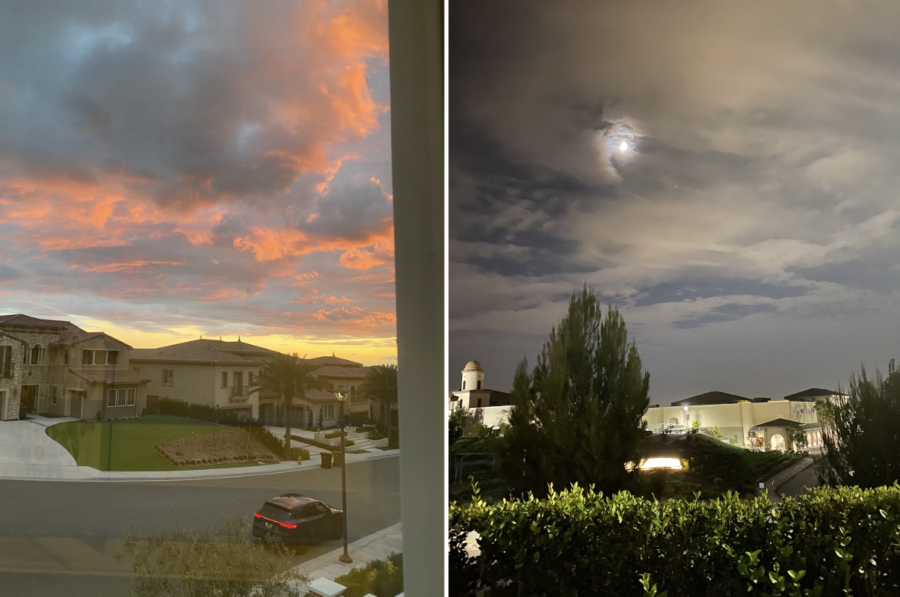Let’s Spring Forward!
The sky at 7:15, after the time changed versus the sky at 7:15 in November.
April 4, 2023
March is full of many wonderful surprises, including a visit from the Leprechaun and the flowers and trees starting to look full and bright again. Yet, a drawback that most high schoolers dread is springing forward for Daylight Saving Time. Instead of waking up at the usual 7:00 to go to school, we lose an hour between 1 and 3, and we are actually waking up at 6:00! But if rumors hold true, it seems like we are in for a change next year.
Daylight Saving Time affects us in so many ways, not just sleep deprivation. There are positive and negative consequences of the time change. One harm associated with the time change includes increased risks of heart attacks and strokes. James A. Rowley, a professor of medicine at Wayne State University’s School of Medicine says that “The way our circadian biology works out is that light in the morning actually helps us set our body clock to go to sleep at a normal hour at night.” Losing an hour can change our circadian rhythm which would lead to our sleep schedule being “off” for a few days before going back to normal. This may sound like a not a big deal, but this can increase the risk of medical emergencies like motor vehicle accidents, cardiovascular events and mood disturbances. Also, it can lead to an increased risk of stroke and hospital admissions, and increased production of inflammatory markers—one of the body’s responses to stress. Some research also shows that traffic fatalities increase as much as 6% in the first few days following the change to daylight saving time (American Academy of Sleep Medicine).
Despite these health risks, there are still some positive effects to Daylight Saving Time. For instance, the crime rate drops every year because there is more daylight, and crimes tend to be committed in the evening when it is dark. Also, people enjoy when the sun stays out until the evening. It is nice to have more sunlight, especially as the weather gets warmer. Many students at Yorba Linda High School are enjoying the time change.
“The weather recently has been so crazy,” says Dhyani Balsara (10). “Daylight Saving Time creates an environment where it is nicer outside and I can hang out with my friends in the evening time. And, of course, I have more time to take pictures of the sunset.”
Many are currently advocating for Daylight Saving Time to be permanent. This means that our country will either stay in the current time we are in now (spring forward), or we will be permanently in the fall back time. In 2022, the Senate passed the Sunshine Protection Act, which would lead to permanent spring forward time in the United States. This has not yet taken effect, and Congress has yet to make a decision.
There are a few ways to prepare for the time change, like setting your clocks back and going to sleep earlier on the day of the change. So next year, you will be ready to “Spring Forward!”






































